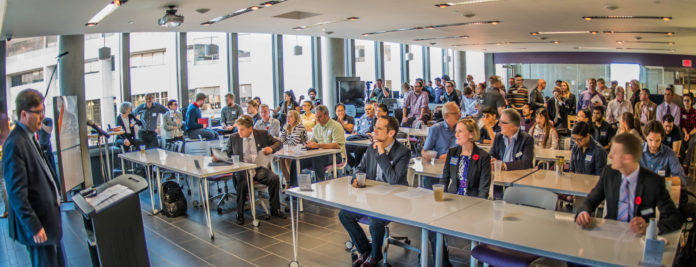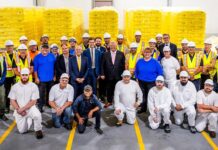The PROTEUS Innovation Competition brings business and science together in order to take research out of the lab and into the market.
PROTEUS is a reverse pitch competition open to anyone in which teams create a commercialization plan for three technological innovations.
Along the way, it helps researchers see their work come to life, hones business experience for competitors and accelerates the commercialization process on discoveries coming out of Ontario’s institutions.
Choose a Sector
There is no limit on the sector, says Lisa Cechetto, executive director of WORLDiscoveries, the business development arm of London’s extensive research network and one of the PROTEUS partners.
“When we first set up the competition, we purposely didn’t focus on a sector. The technology can apply to healthcare, energy, water, engineering. It can be anything.”
PROTEUS began four years ago as a partnership between local partners and for the first time this year,Western has collaborated with McMaster University and the University of Windsor. This year’s competition includes one technological innovation from each university: an antibody therapeutic, a gas exchange for newborns, and a new engineering methodology in additive manufacturing.
Partnerships create Innovation
“We are expanding the community of innovation,” said Cechetto. Born out of a partnership between The University of Western Ontario, Robarts Research Institute and Lawson Health Research Institute, WORLDiscoveries acts as a bridge between local discoveries and global industry.
“The objectives of PROTEUS are to raise awareness of the great research and innovation coming out of research insti- tutes, to promote technology creators and their work and the commercialization of research,” said Cechetto.
“It’s also an opportunity for students in science and technology to build business skills.”
In picking the technologies for the sector, PROTEUS’s selection commit- tee looks for innovations that are ready for commercialization, have a clear path forward and that have engagement from their creators.
Teams provide an abstract in November, a business plan in January and six finalists present a pitch in March.Along the way, teams get business and entrepreneurship training.Winners – one for each technology – are awarded a $5,000 cash prize.
Adam Paish, a PhD student in medical biophysics at the Robarts Research Institute, was a member of a winning team last year. He and two others came up with a business plan for a force-guided surgical navigation tool for joint procedures in which bones must be cut with precision.
Lots going on in London
The technology was developed by Western professor Dr. Louis Ferreira, who specializes in medical mechatronics. His work has the potential to result in a smaller and less costly unit, to save time during surgery, and to improve bone shaping before an implant is installed.
Paish says he plans to pursue a medical innovation fellowship to bridge the space between research and commercialization.
“The competition was a great opportunity to understand how technology interfaces with the business side. Scientists aren’t trained in nurturing a venture, or taking an innovation to market so it can come forward for the public good.”
PROTEUS has resulted in commercialization opportunities for a number of the showcased technologies, including the formation of spinoff companies, says Cechetto. The researchers or institutes that own the technology and the winning teams have the opportunity, but not the obligation, to work together post competition.
Dr. Beth Gillies, a chemistry and chemical engineering professor at Western University, has seen her technology, a stimuli-responsive biodegradable polymer, form the foundation of a startup company called GlycoPolymer Inc. that is focused on using the technology in capsules to release drugs to the colon and intestines.
“As a scientist, I love to see commercialization, but I have zero business expertise and little time. Connecting with students who have that expertise has been great for us.”
















